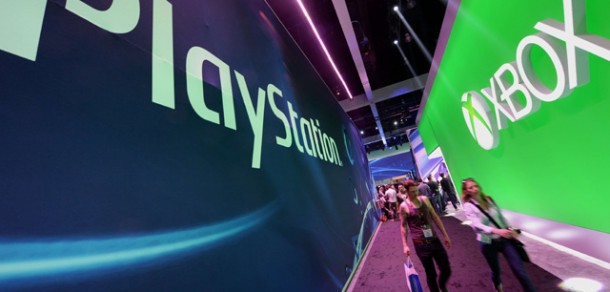Next-gen gaming: Too much authentication?
14 June, 2013
category: Biometrics, Digital ID
It’s been nearly a decade since the last major console battle, and this week’s Electronic Entertainment Expo, or E3 for the initiated, has once again renewed the battle between industry juggernauts Microsoft and Sony.
Following press conferences for both Microsoft’s Xbox One and Sony’s PlayStation 4 (PS4), in which both companies took opposing stances on the future of gaming, industry dominance seems ripe for the taking.
While it makes sense that each console features its own exclusive game titles and software, it is Microsoft’s decision to require regular player authentication that has sparked concern amongst the notoriously critical gaming community.
After giving its presentation at E3 earlier in the week, Sony has since taken the stage and delivered a haymaker of a presentation, revealing its support for disc-based used games, no online check-ins and a price tag that comes in $100 lower than the new Xbox One.
The new generation of Xbox
Microsoft’s approach to next gen is heavily based on the idea that a constantly connected gaming experience is a richer one – a decision that has, thus far, been met with reluctance.
While official statements from Microsoft reveal that a constant Internet connection is not required to play games on its new console, this method is certainly preferable. The concern with a constant connection is two-fold, as questions over daily authentication and the privacy issues associated with Microsoft’s biometric-enabled Kinect device have yet to be comprehensively answered.
The regular authentication comes as a result of Microsoft’s desire to tether games to their owners and their owners alone.
Using an encryption code housed on the game disc, Xbox One will automatically authenticate a game upon installation on the console. The regular check-in then verifies this game-user combination via an Internet connection.
Though the exact time frame has not yet been established, reports from E3 suggest that the new Xbox will require its users to authenticate at least once every 24 hours in order to use the console, which includes games that don’t require any online connectivity at all.
Kinect-ing the dots
The Kinect works in conjunction with the Xbox console, and by using a motion-sensing camera, uses biometrics to not only enable hands-free gaming, but with the Xbox One also acts as the authenticating factor when powering up the device.
Reports revealed that the Kinect has received a substantial upgrade for the new Xbox One, and can now recognize facial features and verify a gamer’s identity even when they’re not holding the controller. Moreover, the latest iteration of the Kinect – which ships with every Xbox One – uses infrared technology to see in the dark, and by surveying the skin color and transparency of the player’s face, the Kinect and Xbox One can estimate the player’s current heart rate.
The concern amongst the gaming community has been the lack of information regarding the privacy settings of the Kinect. The device is used to identify the player and load the proper profile at startup – a feature that will require the console and its camera to remain at a low-power, always-on state.
Microsoft has since released a brief white paper on the Xbox One web site detailing the exact parameters of the Kinect’s privacy policy. As has been the case with camera phones, however, Microsoft’s claims are anything but comforting.
A new gaming landscape
The gaming community’s reaction to Microsoft’s announcements at E3 is just as troubling as Microsoft Games Studios’ current predicament. While the privacy concerns are very real and the daily check-in upsetting, it’s still too early in the story to jump to any conclusions.
It may very well be that the next generation of gaming will very closely resemble the Microsoft vision, with the connectivity and biometric features of its new console becoming the gold standard. For now, however, the lack of transparency coming from Redmond is disconcerting to many.
Only time will tell whether the daily authentication and biometric functions of the Kinect will sink or swim with consumers. Microsoft has seemingly decided to stand by their initial presentation, perhaps betting on the less informed gamer to buy the new console at its November release. For those who understand the privacy and security concerns that go along with an online account, however, a wait-and-see approach may be advisable.



